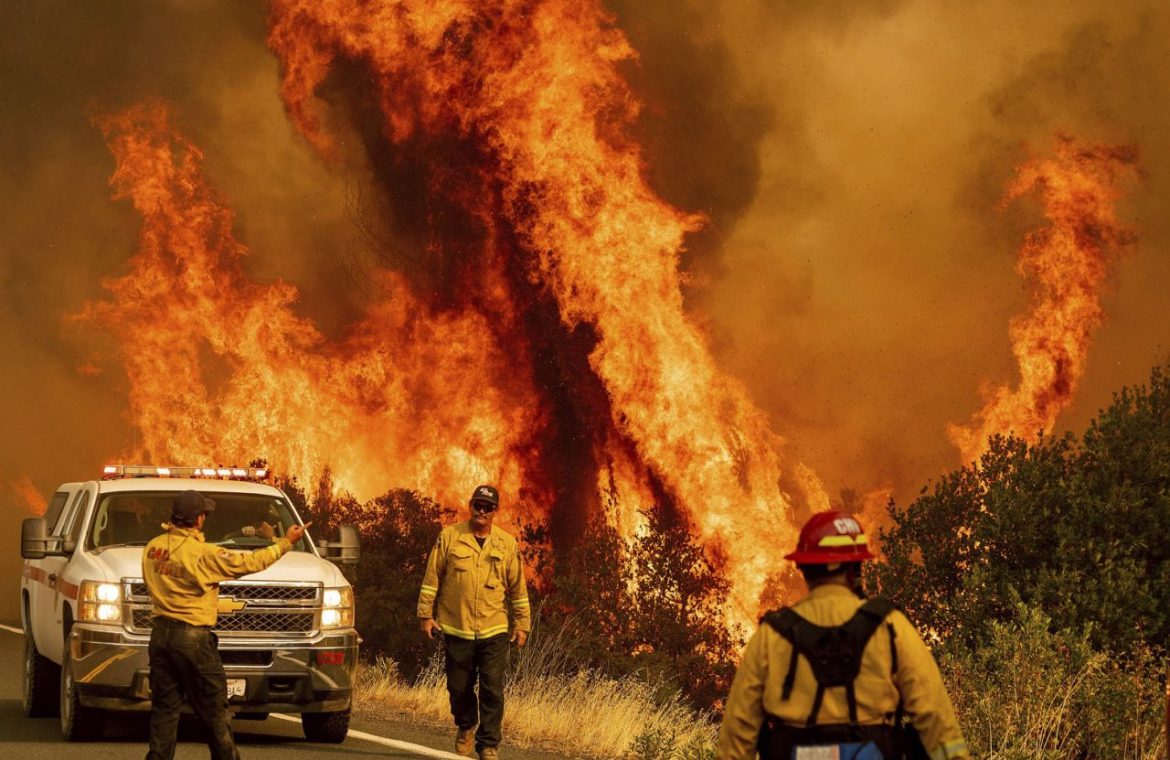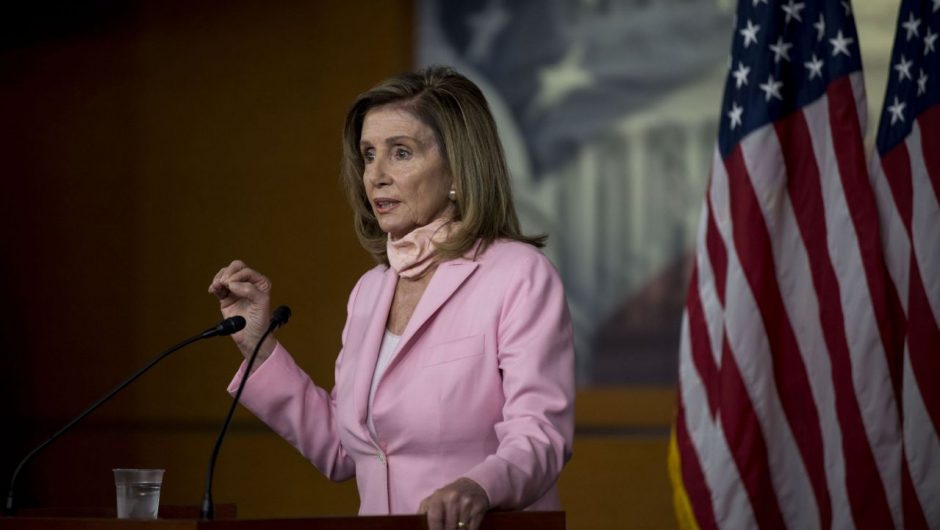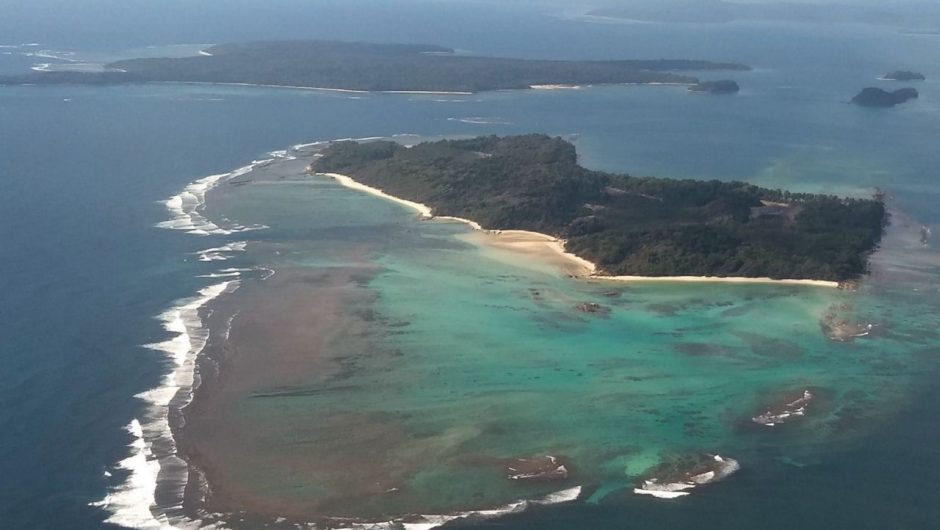NAPA, Calif. — The California LNU Lightning Complex fire has charred more than 350,000 acres, destroyed more than 900 structures, claimed the lives of at least five people and forced thousands more to flee their homes as it rampages in all directions.
But the destructive walls of flames — spanning parts of normally lush Sonoma, Lake and Napa wine counties, north of San Francisco — are not the only crisis in this fragile region.
“We’ve had a four-fer, with COVID, a heat wave, wildfires and the threat of rolling power outages,” Janet Upton, a spokeswoman for Napa County and a former deputy director of Cal Fire, said.
The spread of the coronavirus across the Bay Area makes the already very challenging acts of firefighting and evacuating far more difficult. What’s more, according to experts from the Washington State Department of Health, breathing in wildfire smoke may worsen the symptoms of COVID-19, make people more susceptible to general respiratory infections, and put strains on overall mental health.
This year’s fire season is one of the most active in state history: more than 7,000 blazes have torn through some 1.4 million acres, fueled in part by dry conditions. But because fire is only one part of the problem, health experts, firefighters, emergency responders and local leaders all report that they are grappling with a multilayered crisis of overwhelming scale, putting enormous burdens on people on the front lines.
In the town of Sonoma, where air quality continues to be unhealthy because of wildfire smoke, retired San Francisco firefighter Bob Cuff, who has asthma, is staying inside. “I don’t go out much when the air is bad. Just a quick run to the grocery store. But that’s also because of COVID. I’m trying to stay away from other people,” he said.
In recent days, he’s felt his throat and lungs get congested, and doesn’t go anywhere without his inhaler.
“I’ll be 68 in December. I smoked until I was 50. I was a fireman: I smoked sofas!” Cuff, who served in the San Francisco Fire Department for 27 years, said with a throaty laugh. “I’m compromised in so many different ways like that.”
Story continues
Zac Unger, a firefighter who has been with the Oakland Fire Department for 22 years, said crews were “stretched incredibly thin” and in some cases working more than 100-hour shifts.
Unger, who said he had been on call for 120 hours straight, patrolling for new fires, noted firefighters were doing all they could to contain the inferno while staying safe from COVID-19 infection.
“It is manifestly an unsafe situation both as it relates to fire and as it relates to COVID,” he said.
In what he described as “another risk on top of the other risks,” firefighters are also assisting people who have COVID-19.
“I’ve got a wife and three kids, and that’s the hardest part. My kids are scared to hug me on days when I treat COVID patients,” Unger said. “There’s a bit of distance that our job has created between us and our families. It breaks your heart when you can’t give your little kid a hug.”
Cots are spread out in Crosswalk Community Church in Napa, Calif., on Aug. 24, 2020. (Chiara Sottile / NBC News)
The disruptions caused by the fires have raised concerns about an increased risk of COVID-19 transmission, as evacuees and rescue workers might cluster together.
“Whenever we have people who are in constant contact with one another that don’t normally live together, there’s definitely a risk of transmission of COVID,” Sonoma County Health Officer Dr. Sundari Mase said at a press briefing Monday.
Napa County has provided shelter services to some 351 people since the fires broke out last week due to widespread lightning strikes, according to Upton. The county has been working to help residents amid what she described as a “disaster inside a disaster.”
The plans include a shelter inside the Crosswalk Community Church, just off Highway 29 in Napa, where hundreds of residents forced from their homes have sought refuge in recent days. The church has served as the primary evacuation center for decades; this year is starkly different.
This summer, the cots inside the church’s sanctuary are only being used as temporary places to rest instead of places to sleep overnight.
“Because of COVID, people who are verified evacuees … are being put up at hotels locally,” said Peter Shaw, the senior pastor, who has worked at the church for 20 years and helped with local disaster relief for two earthquakes, two floods and three fires.
“We can usually get a couple hundred people in here, but now we’re down to about 50 [cots],” he said, gesturing to rows of empty green fabric cots carefully spaced apart to allow for social distancing.
Shaw said the church hands out $2,000 in gift cards every day to people affected by the blazes, most of which are donated by locals.
“Everything dropped off here must be disinfected,” he said, surrounded by volunteers and staffers checking in new arrivals and hunched over laptops at folding tables, making phone calls in English and Spanish.
Outside the church, under a beige sky thick with smoke, a steady stream of people trickled in and had their temperatures taken, part of screenings for COVID-19. Upton said for people who tested positive for COVID-19 or who had been under self-quarantine, they could be moved to a separate space outside the shelter.
In addition to converting its sanctuary to a temporary rest stop, Crosswalk has dozens of cots set up — always six feet apart — inside its gym. County staff members and volunteers from the Community Organization Active in Disaster, or COAD, keep the operation running around the clock in two 12-hour shifts.
But for some residents, the already traumatizing threat of having to evacuate is even more stressful because of the coronavirus. Sonoma County has seen cases spike in recent weeks.
Michelle Petersen, a resident of Santa Rosa and a private duty nurse who works in home care, believes a shelter would not be feasible for her family. She has two developmentally disabled children, ages 18 and 21, one of whom is immunocompromised. Her husband is currently undergoing chemotherapy to fight stage 3 colon cancer and spent June in a hospital. One child is diabetic, as is her husband.
“Because of my son and my husband, a shelter would not be good, because it’s a breeding ground for diseases,” she said. “I’m worried all the time for my family,” she added, noting that even limited contact with hotel staff and the logistics of being away from home concern her now.
Peterson said her family was evacuated during two previous California fires — the Tubbs fire and the Kincade fire in 2017 and 2019, respectively. This year, she began making an evacuation plan for the new blaze as soon as it broke out Aug. 17. For the time being, the Petersons are staying at their home, windows closed, to prevent smoke from getting inside.
“We only go out if we have to go out, and it’s usually me who goes out, like for medication,” she said.
“We just try to go with the flow and make the best we can of our situation. There’s not much we can do to change anything, so we just hope for the best. You just never know.”
Chiara Sottile reported from Napa, California, and Daniel Arkin reported from New York.








